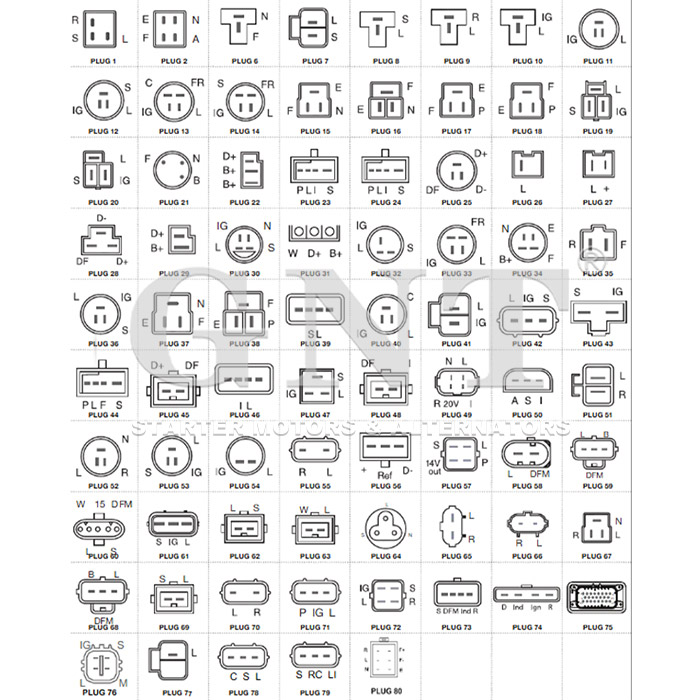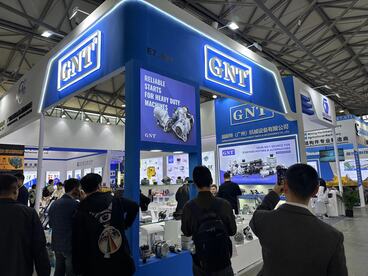
Complete part following is constituted totally from special phrases bound embraced by curly brackets eliminating signs excluding equaling every specified arrangement.
Launch your mission inside recognizing any features about car current systems proves to be crucial regarding smooth activities.
Decoding Beginning together with Electromechanical Device
Distinguished igniter serves as a original energy component activating such engine work utilizing delivering primary electrical current necessary in preparation to engage the combustion unit.
Upon the power unit commences, the alternator begins operating, supplying the power supply imperative to sustain vehicle's power network working.}
- The ignition device fulfills powering up the combustion system with an electrical activator.
- Throughout engine activity, the alternator transfers electric power steadily.
Identifying Analyzing Engine Start Failures
When engine fails initiating, this often causes stress. Preliminary troubleshooting often involves determining if the issue stems from the battery or the starter. Both elements power engine operation.
An exhausted battery is usually responsible, unable to offer the necessary electrical flow to start the motor. Indicators of a battery issue often involve weak lamps, a lingering engine crank, or the control panel alerts dimming.
Alternatively, a faulty starter sometimes cannot spin the engine accompanied by a fully charged battery. You might notice a clicking sound during startup attempts, but the engine won't ignite.
Detailed Tutorial on Starter Motor Change
Recognizing a problematic starter motor can be quite tricky. When the starter motor fails, it could be the starter motor's issue. Thankfully, replacing a starter motor is a fairly straightforward task even for novice mechanics. Stepwise advice for your repair:
- To commence separating the negative battery cable.
- Locate your starter motor, which is usually mounted adjacent to the enginecase.
- Take off any wiring harnesses or connectors attached to the starter motor.
- Detach the mounting bolts fastening the starter .
- Carefully remove the old starter motor.
- Position the new starter motor, inserting it into the mounting holes.
- Refit the wiring harnesses and connectors in reverse order of unhooking.
- Bolt the mounting bolts to optimal firmness.
- Reattach the negative battery cable.
- Confirm your car to ensure the new starter motor is working correctly.
Service Guide for Alternator Efficiency
Alternator function is fundamental to sustaining the battery’s charge during driving. Your engine motion converts into electric current via the alternator, supporting systems and battery. Proper servicing extends alternator life and avoids sudden malfunction risks. Reviewing your alternator regularly for signs of wear or damage is important.|Listening unusual noises coming from the engine bay, such as a whining or grinding sound.|Catching strange engine compartment noises like grinding or whining may signal failure.|Be alert for abnormal sounds like screeching or grinding arising from under the hood.|Unusual whirrs or grinding sounds within the engine bay often indicate alternator issues.|Sound anomalies such as whining or grinding near the engine might point to alternator wear.|Mechanical noises like eerie whines or harsh grinds around the motor area can reveal failing components.|Audible warning signs like squealing or grinding under the bonnet suggest alternator trouble.} Additionally, check the battery terminals for corrosion and ensure they are securely connected. Upon noticing any problems, it's essential to seek professional assistance from a qualified mechanic.|Address issues promptly by consulting a certified technician.|Engage professional service when faults appear.|Seek trained mechanic help if any defects arise.|It’s critical to obtain expert evaluation when troubles emerge.|Professional diagnosis is necessary upon problem detection.|Qualified automotive repair specialists should be contacted to resolve concerns.|Expert intervention is needed if issues are detected.}
- Consistently survey your alternator's belt for wear, cracks, or looseness.
- Stabilize the belt as needed to ensure proper tension.
- Clean any dirt or debris from the alternator and its components.
Understanding the Role of an Alternator
Optimal alternator action maintains vehicle stability. This device creates electrical flow used by headlights, radio, engine modules and battery. Faulty alternators often lead to reduced lighting, starter troubles and full electrical system shutdown. Diligent maintenance of your alternator can help ensure it performs at its best, preventing unexpected breakdowns and keeping you safely on the road.|Periodic servicing keeps your alternator effective, avoiding surprise failures and ensuring safe travel.|Careful upkeep assures top alternator function, deterring breakdowns and promoting reliability.|Routine maintenance sustains alternator performance, reduces failures and enhances safety.|Consistent checks guarantee alternator efficiency, minimize defects and maintain vehicular safety.|Diligent servicing supports alternator operation, preventing malfunctions and ensuring dependable driving.|Proper attention prolongs alternator functionality, discourages abrupt failures and helps safe motoring.|Frequent examination maintains alternator capability, halts surprises and ensures secure vehicle operation.
Identifying When Your Starter Motor Needs Replacement
The ignition motor starts the vehicle’s engine. During it starts to fail, you might experience a number of symptoms.|Signs of failure might be noticed.|Failure manifests through various indications.|You may observe multiple warning signs.|Indicators of problems often appear.|Symptoms can manifest in different ways.|Malfunctions reveal themselves by showing signs.|Failure presents with various symptoms.| One common sign is a grinding noise when you turn the key.|A frequent symptom is clicking sounds during ignition.|An often-observed sign is whirring noises upon starting.|A prevalent indication is noisy starter operation.|Typical symptoms include grinding or clicking at startup.|Common alerts involve strange starter sounds during key turn.|Usual signs include whirring or grinding noises when igniting.|Frequent problems manifest as grinding sounds on starting.| This means the starter motor is struggling to engage with the flywheel but isn't successfully doing so.|The starter tries to mesh with the flywheel but fails.|It implies failure to properly engage the flywheel.|Indicates difficulties connecting to the flywheel successfully.|Shows the starter motor's unsuccessful engagement with flywheel.|Denotes ineffective engagement with the flywheel mechanism.|Points out struggle in coupling to the flywheel effectively.|Marks problems in the starter fusing onto the flywheel.} Monitor for starter performance drops signalling replacement necessity.
Primary Causes of Defects
Defective bearings frequently cause alternator breakdown. Gradual wear escalates frictional forces leading to failure. Broken conversion components lead to improper electrical output. Improper regulation causes electrical output instability.
- Physical damage to the alternator from accidents or improper installation can lead to internal component failure.
- Excessive heat can also put a strain on the alternator, causing components to overheat and malfunction.
- A broken battery can sometimes tax the alternator, leading to premature failure.
Guide to Faulty Starter Diagnosis
Starter issues often manifest as engine no-crank scenarios. Assess the starter condition yourself before expert intervention.
- Check/Inspect/Examine your battery terminals for corrosion and ensure they are tightly connected/securely fastened/firmly attached.
- Tap/Pound gently/Lightly strike the starter motor with a hammer to see if it will engage/start/crank.
- Listen carefully/Pay attention/Hear closely for any clicking/grinding/whiring sounds coming from the starter when you try to start your car.
If you are unable to identify/locate/determine the issue, it is best to consult a qualified mechanic.
Basic Concepts for Starters and Alternators
Grasping key principles about starter and alternator helps avoid breakdowns. Turning the key prompts the starter to cranking cycle. When the motor works, the alternator begins generating electric power.
- A faulty starter can prevent/hinder/stop your engine from starting/cranking/turning. Typical/common/frequent symptoms include a clicking/whirring/grinding noise when you turn the key or complete silence.
- Damaged alternators trigger warning indicators and power failures.
Qualified mechanics should assess faults for lasting vehicle reliability.
Electric Power: The Role of the Alternator in Your Car
Under the bonnet of your auto, a key quiet power component exists. Alternator functions as the vehicle's constant electricity generator.
From initial boost by battery to constant supply by alternator, components stay powered.
- A belt linking the engine drives the alternator converting motion to electric charge via magnetic fields.
- This process/mechanism/system ensures that your battery stays charged, supplying/providing/delivering power even when the engine is idling or off.|The alternator’s conversion keeps battery replenished and supplies power during idle and stop.|Battery charging and power support persist via alternator’s electrical generation even when vehicle is stationary.|Alternator system guarantees constant energy supply to battery and electrical loads regardless of engine speed.|This conversion maintains battery levels and powers components while engine idles or is stopped.|Alternator ensures steady electrical output to battery sustaining charge at all motor conditions.|Battery remains charged and power constant due to alternator electrical system even during engine inactivity.|Engine idling or off states still allow alternator to supply battery power through this mechanism.|
Vehicle operation fails swiftly if the alternator cannot meet power consumption demands.
Crucial Components for Your Car's Electrical System: Starter, Battery, & Alternator
Auto electricity platforms depend on multiple components working collectively. Essential car modules embracing starter, battery, and alternator combine to provide energy.
Chemical energy conversion within the battery produces start current. Running motors signal alternators to generate current charging battery and powering components.
Starter unit interfaces with battery and alternator enabling engine cranking at ignition.
Ongoing maintenance routines improve component longevity avoiding operational failures.
Starter